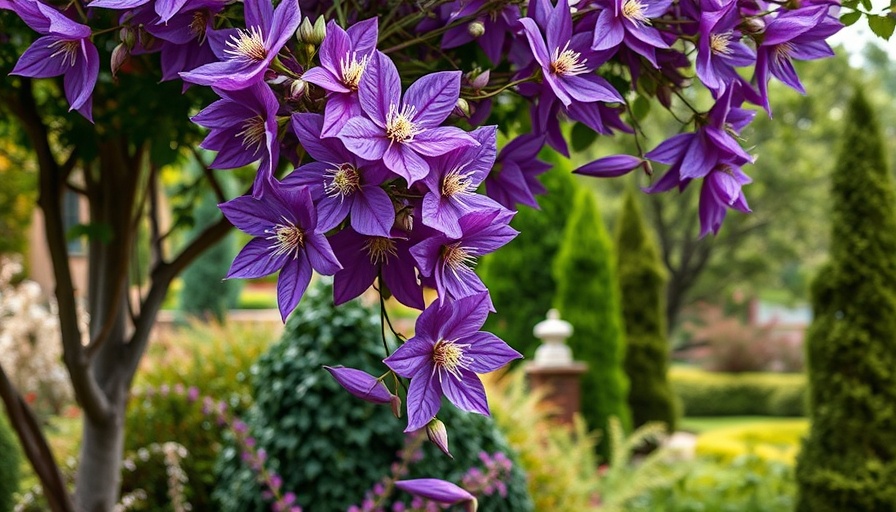
Unlocking the Beauty of Vertical Gardening with Clematis
Clematis vines are not only a feast for the eyes with their stunning flowers, but they also offer a spectacular way to elevate your garden aesthetics. Perfect for various garden settings—be it as ground covers or container plants—these climbers bring life and color to vertical spaces. However, in order to display their climbing talents, clematis requires proper support and care to truly thrive. Let’s delve deeper into the unique features and advantages of growing clematis vertically.
The Nature of Clematis Climbing
Understanding clematis's climbing behavior is crucial to successful cultivation. Unlike other climbers like wisteria or ivy, clematis does not wrap around structures but rather uses its leaf stems, known as petioles, to anchor itself onto narrow supports. This twining habit requires specific materials that are thin enough (under three-quarters of an inch in diameter) for the petioles to grasp. Common options include bamboo stakes, thin branches, or even chicken wire. By providing suitable support, you ensure that your clematis can grow upward, creating a lush vertical display.
Choosing the Right Support for Clematis
When selecting a support system, consider the aesthetics and functionality of your trellis. Metal lampposts or wooden posts can serve as excellent supports, but they might require some creativity to securely attach the vines. Investing time into rigging a successful trellis will reward you with stunning floral displays that draw attention throughout the blooming season and beyond.
Creative Vertical Gardening Techniques
For the more adventurous, incorporating a mix of climbing supports can add dimension to your garden. Consider using structures like pergolas or arbors that not only provide support but also serve as beautiful focal points in your outdoor living space. Additionally, don’t shy away from using creative materials like wire or even fishing line for trellises, which can be easy to manipulate and maintain.
Essential Care Tips for Your Clematis
While training your clematis to climb is vital, maintaining its health ensures your garden flourishes year-round. Regular watering, particularly in dry spells, and the application of organic fertilizers can enhance growth and blooming. Ensure adequate sunlight exposure—most clematis varieties thrive in sunny conditions. Regular pruning in late winter or early spring, depending on the type of clematis, encourages new growth and a healthier plant.
The Priceless Rewards of Vertical Gardening
Vertical gardening with clematis not only enhances the garden's structure but also improves air circulation and maximizes space, making it perfect for urban settings or smaller yards. The blooms attract pollinators like bees and butterflies, fostering a vibrant ecosystem while beautifying your surroundings. As summer approaches, imagine how delightful it will be to step outside and see your clematis flourishing in a glorious vertical display.
Embrace the Challenge: Your Next Gardening Project Awaits!
As you embark on training your clematis vines, remember that patience and creativity are essential. Document your progress with notes and photographs, which can be invaluable for future gardening endeavors. Engaging with fellow gardening enthusiasts through gardening clubs or online platforms can provide inspiration and tips tailored to your gardening challenges.
So grab those garden tools and get ready to transform your space with vertical clematis! Your garden isn’t just about plants; it’s a canvas waiting for your unique touch.
 Add Row
Add Row  Add
Add 




Write A Comment